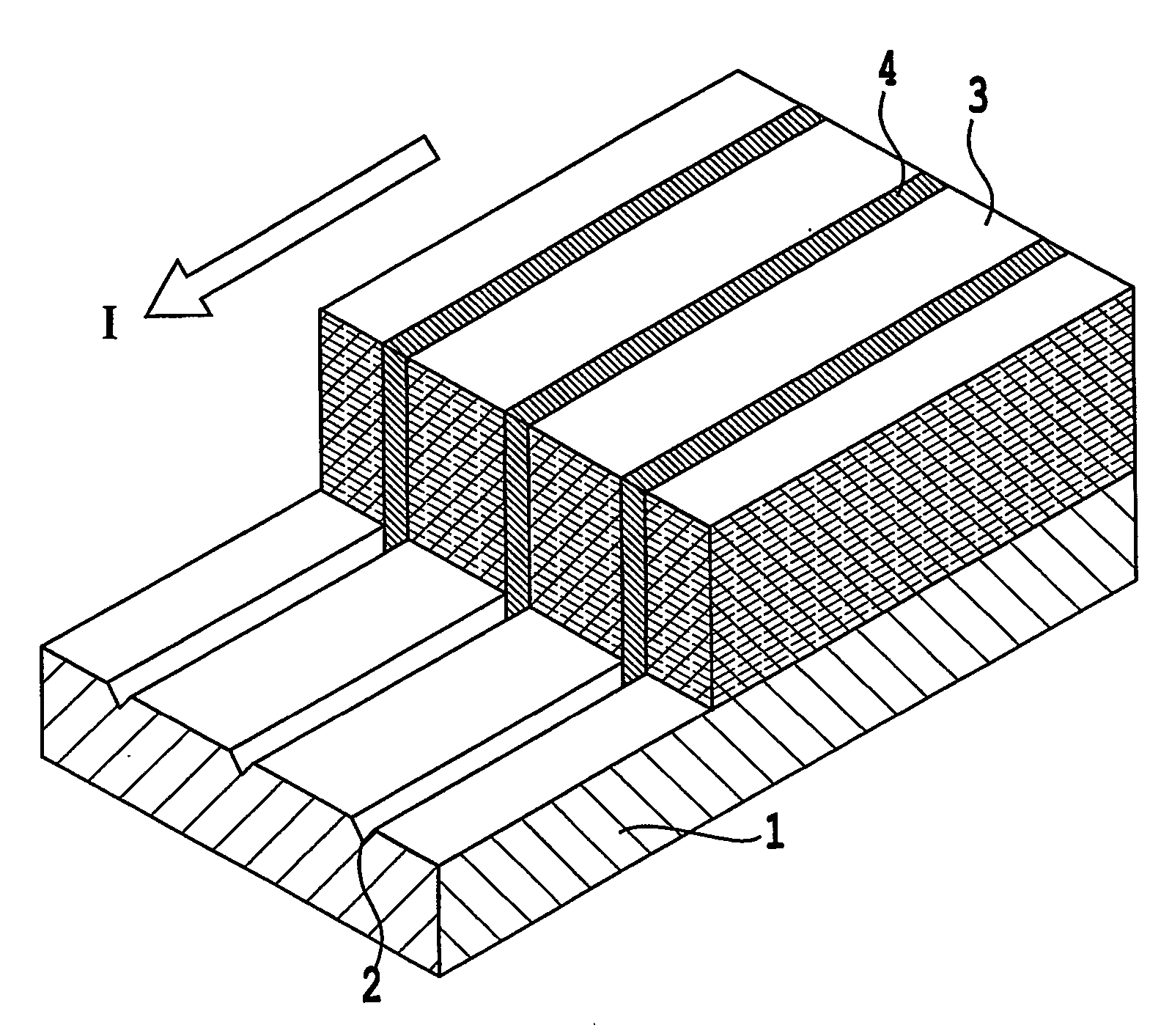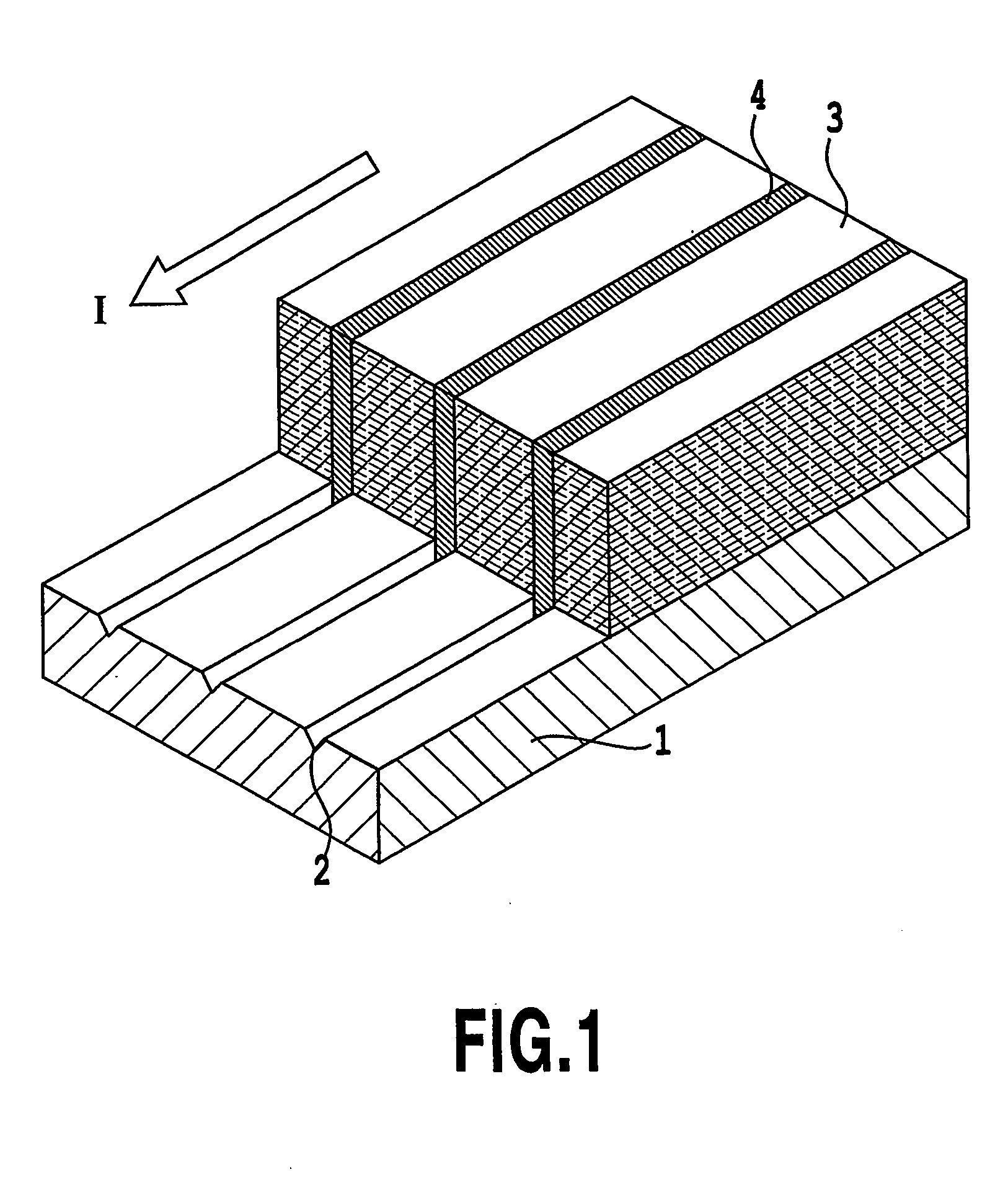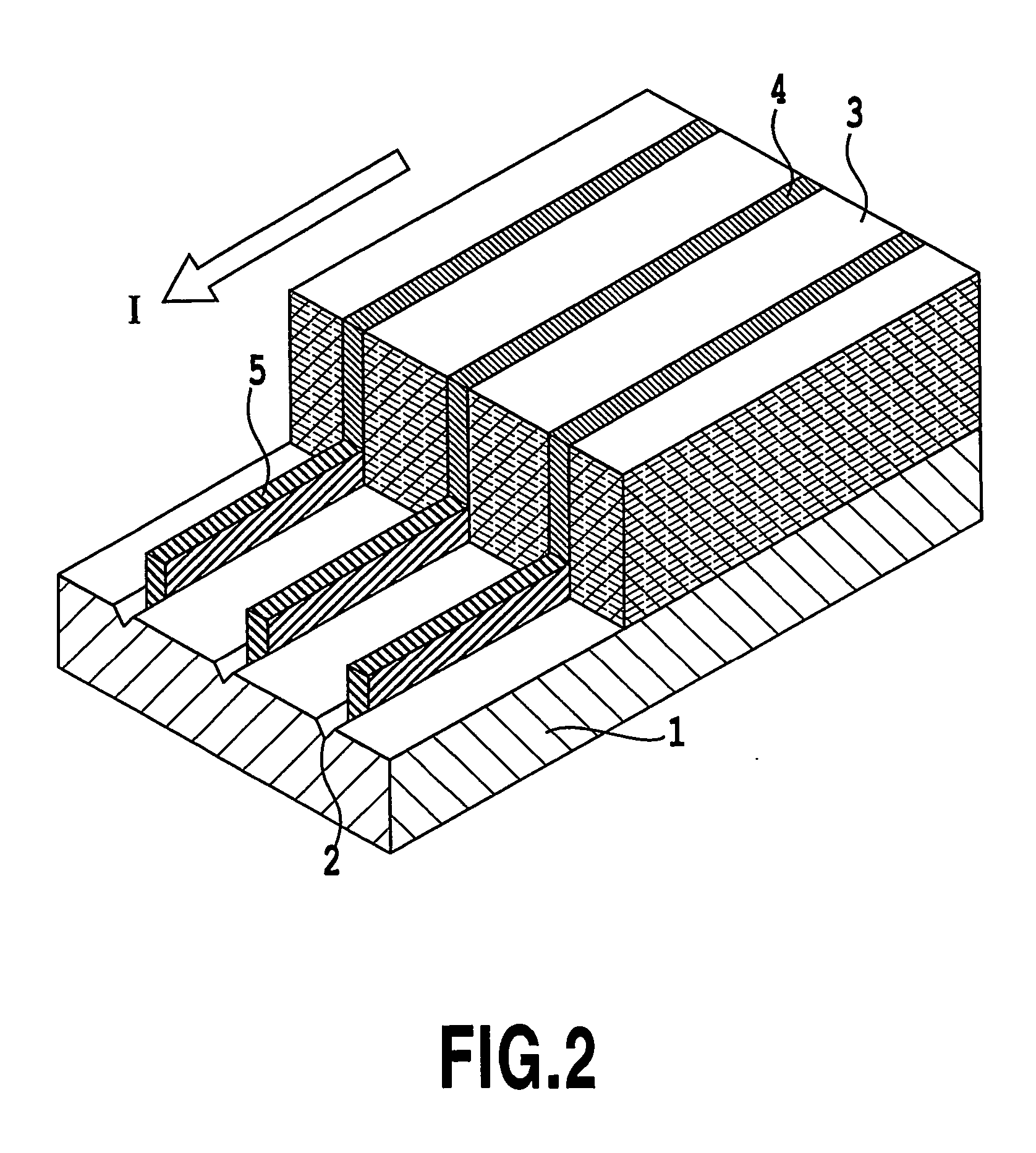Superconducting film and method of manufacturing the same
a technology of superconducting film and manufacturing method, which is applied in the direction of superconductor devices, vacuum evaporation coating, transportation and packaging, etc., can solve the problems of difficult to control the density per unit area of dislocation, difficulty in controlling the inclination of boundary planes, artificial defects, etc., and achieves excellent pinning efficiency, low cost, and high jc.
- Summary
- Abstract
- Description
- Claims
- Application Information
AI Technical Summary
Benefits of technology
Problems solved by technology
Method used
Image
Examples
example 1
[0062] First, nano grooves were formed on a single-crystal substrate. An SrTiO3 substrate 3 mm wide×10 mm long×0.5 mm thick, the (100) plane of which was mirror-like polished, was prepared as the single-crystal substrate. Subsequently, nano grooves were formed in a region of 60 μm×60 μm in the central part of this substrate surface by utilizing AFM in processing mode. With the width and depth of the nano grooves set at 30 nm respectively and the length of the nano grooves at 60 μm, 330 nano grooves were formed in the above-described region with equal spacing such that the nano grooves become parallel to the longitudinal direction of the substrate. The average spacing of the centers of the nano grooves was 150 nm. With the substrate fixed on a heater provided within a vacuum chamber, a thin film of YBa2Cu3O7−x (YBCO) was formed on the substrate by the excimer pulsed laser deposition (PLD) method and a superconducting film (I-1) was obtained. At this time, a flat SrTiO3 substrate 3 mm...
example 2
[0065] Nano grooves were formed on an SrTiO3 substrate in the same manner as in Example 1. Next, the substrate on which nano grooves had been formed was fixed on a heater within a vacuum heater for PLD, and defect inducing parts were formed on the nano grooves by the PLD method. Y2O3 was used as the material for the defect inducing parts. A Y2O3 sintered compact target was ablated using 30 pulses of an excimer laser, and Y2O3 was deposited on the SrTiO3 substrate. At this time, the substrate temperature was 700° C. and the partial oxygen pressure was 10−5 Torr (1.33×10−3 Pa). Under these conditions, Y2O3 deposited only on the nano grooves to form the defect inducing parts. Then, the temperature was lowered to room temperature and in the same manner as in Example 1, an SrTiO3 substrate without a nano groove was attached on the heater, beside the sample with nano grooves and defect inducing parts. Then, in the same manner as in Example 1, YBCO films were formed by the PLD method using...
example 3
[0067] First, nano holes were formed on a single-crystal substrate. An SrTiO3 substrate 3 mm wide×10 mm long×0.5 mm thick, the (100) plane of which was mirror-like polished, was prepared as the single-crystal substrate. Rows of nano holes were formed in a region of 60 μm×60 μm in the central part of this substrate surface by use of electron beam lithography. The width and depth of the nano holes were 40 nm and 20 nm, respectively. The rows of nano holes were arranged so as to be parallel to the length direction of the substrate and so that the length of the rows became 60 μm. The spacing between the nano holes in the longitudinal direction of the substrate was 100 nm, and 330 rows of nano holes were formed in the above-described region 60 μm×60 μm with equal spacing. The average spacing of the centers of the nano hole rows was 150 nm. With this substrate fixed on a heater provided within a vacuum chamber, a thin film of YBa2Cu3O7−x (YBCO) was formed on the substrate by the excimer p...
PUM
| Property | Measurement | Unit |
|---|---|---|
| depth | aaaaa | aaaaa |
| depth | aaaaa | aaaaa |
| diameter | aaaaa | aaaaa |
Abstract
Description
Claims
Application Information
 Login to View More
Login to View More - R&D
- Intellectual Property
- Life Sciences
- Materials
- Tech Scout
- Unparalleled Data Quality
- Higher Quality Content
- 60% Fewer Hallucinations
Browse by: Latest US Patents, China's latest patents, Technical Efficacy Thesaurus, Application Domain, Technology Topic, Popular Technical Reports.
© 2025 PatSnap. All rights reserved.Legal|Privacy policy|Modern Slavery Act Transparency Statement|Sitemap|About US| Contact US: help@patsnap.com



